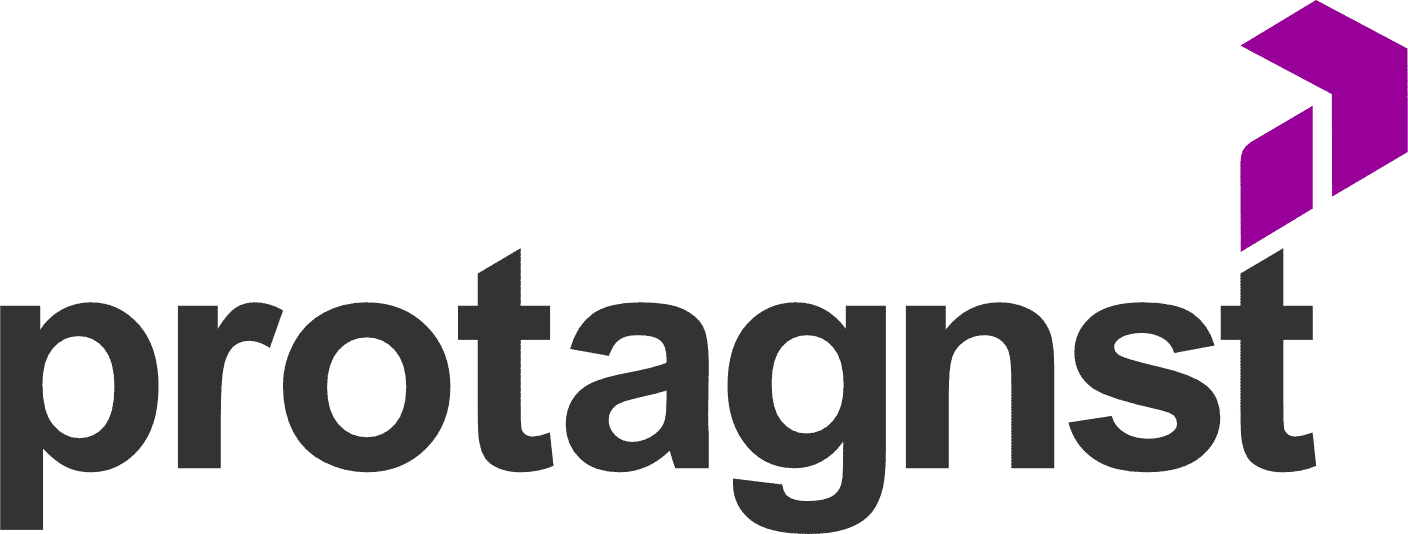There are countless ways to define marketing and sales strategies, but in the end they come together in two large groups: the inbound model and the outbound model. While inbound turns to learning and spontaneous searchby the leads, the outbound is active, does the opposite and goes in search of them. After all, what is outbound? And what is outbound marketing for? Precisely to show a potential customer that the company has something that will help him, even if he didn’t even know he needed it.
Although it is not something watertight, it can be said that the outbound model is more interesting forcorporate business, known as B2B. In these, negotiations take longer, involve a higher average ticket and, for this very reason, require a more direct approach, involving different decision makers – not to be confused with hurried. And, in this article, we are going to show what outbound marketing is for within this context and how to apply it togenerate more qualified leads for your company.
Mapa do Conteúdo:
ToggleWhat is outbound marketing?
Outbound marketing or outbound sales is a business model for actively prospecting for new commercial opportunities. It involves several techniques, ranging from the identification ofwhat is your ideal customer profile to what he values, and what needs to be done to generate qualified opportunities.
In this article we are going to talk a lot about outbound, its advantages, when to use it and present a step by step so that your company can get out of inertia and put it all into practice.
What is outbound marketing for?
Outbound marketing is a model ofactive prospecting for new customers. Also called interruption marketing, in this strategy the idea is to identify who has the potential to become a new customer andtake a direct approach.
Before starting an approach, it is important to define who we should approach, why we should approach it, and really only offer something if it is in line with what the lead is looking for or will help him in the future. Our idea is to qualify the lead even before starting theactive prospecting process.
This is the most classic model – in the sense of “used for many decades” – of marketing. It includes TV commercials, newspaper and magazine advertising, billboards, as well as cold calls and other media.
In recent years, outbound marketing has been losing ground to inbound marketing – also called attraction marketing –, due to the fact that inbound is cheaper and spontaneously arouses interest. In addition, it is a less “invasive” model.
Inbound marketing manages to attract large volumes of leads, but which often require greater prior qualification, as they are impacted by different media and end up finding the company in different ways.
From an operational point of view, inbound requires asking questions to assess whether or not that customer is a potential customer. This demands a very high cost of hours of work, making the company really have to filter who is and who is not worth doing business with.
However, outbound marketing has also evolved and regained its importance. With cold calling 2.0, cold email and newprospecting strategies, such as approaches via social networks (social selling), especially LinkedIn, it has proven to be an important way to attract new customers.
Furthermore,outbound marketing has a big advantage in relation to inbound: despite demanding larger investments, the return is faster. This becomes especially important for companies seeking rapid sales growth or market repositioning.
The outbound manages to attract customers within a pre-delimited size and manages to attract more customers within a more interesting size. These are customers who have the economic and financial capacity to pay more, and who can get bigger tickets.

Outbound 2.0
One of the main responsible for showing the importance of outbound marketing wasAaron Ross. In the early 2000s, he took over the sales team atSalesforce, modernized processes and made the company jump from revenues of US$ 5 million to US$ 100 million, transforming it into a global giant.
In the model launched by Ross, which would come to be called outbound 2.0 or cold call 2.0., it was about segmenting and specializing the sales team. Instead of everyone doing the same thing, sellers with different profiles started to act where they stood out.
Author of the book “Predictable Revenue”, Aaron Ross teaches us that a good sales team needs to be formed both by experienced sellers, specialized in closing deals, and by otherswho excel in prospecting. This is because the same person is hardly capable of carrying out the entire process with the same efficiency.
Also, it doesn’t make sense to get everyone trying to sell, because you often end up wasting time on leads that won’t convert into sales. It is necessary to balance the demand for prospecting with the demand for business generated and sales closed. Therefore, specialization in sales becomes necessary.
To address this, Ross showed that much better results are achieved if the prospect team does prior research to identify ideal leads; if in the sequence another team tries to make the first approach – as theBusiness Development Representative or theSales Development
Representative; and if the closing is up to more experienced sellers, who understand negotiation techniques.
Thus, outbound 2.0 is mainly based on the use of intelligence and segmentation. It also makes use of the most up-to-date communication strategies and tools.
Using e-mails, WhatsApp messages, prospecting via LinkedIn, phone calls and using your own prospecting tools are also a fundamental part of the process.
Advantages of outbound marketing
If you ask yourself what outbound marketing is for, if inbound is the darling of the moment, you need to pay attention to some fundamental aspects such as: return on investment, predictability of the sales funnel, right message for the right audience, going after big accounts, better control and, perhaps most importantly, lead qualification. And we will deal with each of them below.
Faster return
If you work with sales or company management, you certainly know the term ROI, an acronym for the English expression Return Over Investment – or, in good Portuguese, Return Over Investment.
This metric serves to know how much the company gained, or lost, with a given investment. Everything you do for future profit should be considered investment, including marketing campaigns.
In this sense, outbound marketing campaigns have a huge advantage over inbound. This is because the return on investment begins to appear as soon as a new customer prospecting campaign is put into action.
Imagine, for example, that your company launches a new product and wants to make it known to the public.
If you opt for inbound strategies, such as content marketing, you will need a lot of SEO work, the results of which will only be seen in a few weeks or months.
On the other hand, if you decide to use cold calling, calling 2.0, TV campaigns or other forms of interruption marketing, the first customers will contact you instantly.
Right message for the right lead
Perhaps one of the most interesting points of outbound marketing is the fact that you can choose who you want to approach. When defining a process, the first step is to design a strategy.
This strategy ofoutbound prospecting defines the size of the company, the geography, the positions, as well as other points, which are essential for your company to set up good meetings.
You don’t sell anything to the lead. It just opens up opportunities. That’s the basic premise. You send the right message to the right lead at the right time.
When imagining an inbound marketing investment, it would be too expensive to target the message only to leads within the ideal profile.
Therefore, in inbound, there is a huge operational cost with qualifying leads.
Have you ever thought about advertising only to decision makers? Can you speak directly to them? Understanding your moment and only setting up good meetings?
The outbound is capable of all of this. With active and well-structured prospecting, it is possible to generate only opportunities that are really good.
In a cold mail strategy, you will only speak with companies of the type, size and segment that you want to serve. You’re going to try to help your real lead solve a problem, which he often doesn’t even know he has.
Easier to land big B2B accounts
Now that you know you can prospect whatever you want, it’s easier to create a strategy to reach large accounts. Before approaching any company or any segment, you’ve already done your homework and come to understand that, if you’re going to make an effort, that effort should bring big bills.
Large B2B accounts are capable of bringing in the equivalent of dozens, sometimes hundreds of “regular” accounts. This is due to the fact that outbound always provides consultative sales, which are aligned with what the customer needs.
Customized solutions take more negotiation time, but they are solutions that require more steps to be implemented. When opening the way, the tendency is that the opportunities generated are for a larger ticket and that they are directly with those who make the decision.
Easier measurement
Measuring, calculating and evaluating the results of your marketing and sales actions is easier and faster when working with outbound marketing.
This happens because the campaigns end up targeting a large number of people in a short period of time. Think, for example, of a strategy that allows direct contact with two thousand leads in a month – via cold calling, for example. This will generate a good basis for analysis of results. Thus, access to information and data ends up being more agile.
An outbound marketing action that results in new leads andlots of conversions right away demonstrate that it has been well definedyour buyer persona and that the strategy is working.
On the other hand, a low immediate return allows a quick course correction and a more assertive investment.
It is extremely important to have this feedback during the process, since the strategy is alive and deserves constant evaluation.
Sales funnel predictability
One of the most interesting concepts of the “Predictable Revenue” approach, as the name implies, is to create a sales funnel that generates revenue in a predictable way, in which you know what you need to do and how long you will reap results to increase sales in a staggered way.
By predicting your sales funnel, you can recurrently double or multiply sales, replicating the model created for outbound sales.
For a CEO or commercial manager, knowing your numbers and what you need to do to double in size means not depending on anything other than good management and good execution to grow steadily and assertively.
Best leads
In outbound 2.0, contact lists are better developed and yield prospects and leads with more potential.
This is because, as we mentioned earlier, the prospecting work is done from the beginning by a specialized team. Through research, theIdeal Client Profile, a persona is built and leads are sought from that. Thus, the chance of finding people who might really be interested in moving forward in a negotiation is greater.
In addition, this type of data-based prospecting allows you to look for leads that offer deals with a higher average ticket and are willing to make long-term agreements. Thus, the eventual sale leaves and the one that makes possible the agreement with long-term customers enters.
The outbound 2.0 model is very suitable for business between companies, since the seller’s profile is more consultative, who interacts more intensely with leads in search of a more personalized business design.
To be able to find the perfect leads, one strategy is to connect and be attentive to them in every possible way. The use of social networks such as linkedin, made this type of approach and prospecting much more effective. It’s what we callsocial selling.

Disadvantages of outbound marketing
Not everything, however, is just advantages in this type of marketing and sales strategy. And it’s even to be expected, because if it were the other way around, there would be no need to bet on other models, would you?
Perhaps the main disadvantage of the outbound model is its cost. It is higher than inbound strategies, since it involves hiring specialized people and investing in means to carry the message, which are sometimes very expensive. Therefore, outbound campaigns must be very well analyzed.
You may not have a scale depending on the size of the market you work with. It is necessary to assess whether, in fact, yourSDR (Sales Development Representative) ou BDR (Business Development Representative) will be able to generate enough opportunities for your company.
They work if they involved sales with a high average ticket, since the return will offset the expenses. Likewise, they can be interesting if they represent a large volume of sales in a short period of time.
Another disadvantage is the potential to have a high rejection rate if done wrong. Even as interruption marketing has evolved, outbound campaigns that include sending emails, phone calls or Internet advertisements often run into email filters, caller IDs or ad blockers.
This rejection, however, decreases if the prospect team actually identifies the best leads, which will be more likely to be approached.
As these are negotiations with a larger ticket and complex sales, in most cases, it is possible that the sales cycle, that is, the duration of negotiations, is longer.
Finally, outbound marketing has a response time, just like inbound. This ramp-up time, that is, the maturity of the pre-sales process, tends to last from 3 to 6 months. Don’t expect results overnight, as they are unlikely to happen.
Types of outbound marketing approaches
There are countless ways to do outbound marketing and it would be impossible to list them all. But, below, we will show some of the techniques that the market uses most nowadays.
Cold call
This is one of the most traditional sales strategies. Probably everyone has been approached, at least once in their life, bya cold call.
It is when the person responsible for prospecting new customers comes into contact with a consumer or person responsible for the purchasing area of a company to present their product or service.
It is important to point out that the person receiving the call often does not even know about the existence of such a product or company – or even that he was a potential customer for it. And that’s precisely where the name of the strategy comes from: it’s a cold call, in which the potential customer is approached without him having expressed interest.
Like all sales strategies, cold calling has strengths and weaknesses. Among the disadvantages, one of the main ones is the possibility that the person receiving the call will consider the approach inconvenient – and this has a strong potential to make the company offering the business opportunity equally inconvenient.
On the other hand,whether made with expertise by the seller or sales consultant, onecold calling brings some benefits.
One of them is the possibility of having immediate feedback from potential customers. The conversation between the two parties makes it possible to get to know the needs and solutions, clarify doubts and, fundamentally, establish a relationship of trust.
Also, with a good dose of persuasion, it is possible to close a deal right then and there.
Another advantage is that a cold call allows you to collect information from what you consider to be a potential customer, which will facilitate future negotiations. After all, knowing him makes it easier to establish strategies and offer a product or service in a more personalized way.
You need to understand your customer and if he is a customer who answers the phone, if he is willing to listen to someone on the other end. Cold calling is fundamental to the strategies of companies that do not have a consolidated digital presence.
The case of restaurants, which operate a lot through delivery, or even dental clinics, are types of companies that are more used to being prospected by this type of means.
Cold call 2.0
As the name suggests, this is an evolution of cold calling, but with some differences.
In a traditional calling, the seller contacts a list of people and initiates a negotiation with the main purpose of closing a sale at that very moment. It is widely used in business with the final consumer (B2C).
Among the disadvantages of traditional cold calling is the fact that the seller can spend hours connecting with people who have no interest, which represents a waste of time and money.
A cold call 2.0, in turn, is more strategic. A specialized sales team first establishes the ideal group to take calls from. Thus, the chance of closing a deal is greater.
In addition, because they are made by a specialized team, the approach is more personalized and the focus is first on developing a relationship of trust. She will be the one who will result in the closing of the deal.
In terms of sales strategy, cold calling 2.0 measures results differently. It considers converting leads, not immediate sales. After all, the idea is to create a good relationship and have a permanent customer.
Another point to consider is that, by not necessarily seeking an immediate sale, cold calls 2.0 allow for less invasive approaches. Phone calls, emails or WhatsApp messages are shorter and more friendly and encourage interaction.
In practical terms, cold calling 2.0 is often more effective in Business to Business (B2B) business environments.
A big advantage of using outbound prospecting tools is that it allows you to gain strategic information during the process. This means you can cold call only those who opened the email but didn’t respond.
You begin to filter customers even more before starting a cold approach.
Cold e-mail
The use of cold emails is a very similar model to phone calls, but of course through the use of electronic correspondence.
Its use can often be associated with cold calling 2.0 itself, which involves calls, but also sending emails.
The main difference here is in the approach, which is developed from the beginning through emails, advancing to phone calls or even video calls only from the moment when the interest is already in negotiating a sale, and not in prospecting new leads.
Cold email has the great advantage of being a smoother interruption marketing. Sending an email is less invasive than a phone call, as it can be read at the most favorable time.
There are, however, some disadvantages. Perhaps the main one is precisely to get valid e-mails.
Even though it is increasingly easier to access e-mails correctly – by filling out forms or simply accessing websites or corporate pages on social networks – these contacts are often in vain.
This can happen because it is a generalist email – which will make it very difficult to reach the lead within the company –, because it is an old email account and, therefore, already in disuse, or because it ends up in the spam box if the lead settings assign it that way.
The great advantage of using e-mails is to show, through pain (problems that your company solves) or through love (benefits that the company will have when hiring your solution), that your option is the most suitable for the market.
Differently from what the traditional market thinks, the less salesperson your e-mail is, and the more likely it is to help the lead, the greater the chances of you being able to set up a qualified meeting.
The idea is not to sell anything. The main idea of cold mail is to schedule a next step, which is usually a meeting with the decision maker.

Prospecting via LinkedIn
Certainly, the most suitable social network for outbound marketing targeting business between companies is LinkedIn.
It is an environment dedicated exclusively to professional profiles, so you will find good leads there and, of course, your direct contacts.
Prospecting on LinkedIn is constant, and if you have an account there, you’ve probably already been approached by someone offering a business opportunity. And if you still don’t have your profile on this network, you’re wasting your time.
Prospecting on LinkedIn is relatively simple, but a few steps are critical. One of them is to have a complete profile on the network, with a photo and clear information about who you are.
Afterwards, it is necessary to create a network of contacts, since these contacts will make it possible for their contacts to also become part of your radar.
Also, one needs to be active on the net. Posting texts and inviting people to interact will make you engage and become more and more known.
From there, the leads themselves will start to appear. And you, of course, will also be able to do your active prospecting, going after the people you consider ideal and making use of the In Mail that the platform itself offers.
How about structuring outbound marketing processes and seeing your customer base grow? Protagnst is an expert on the subject! Contact us and see how we can help you.
The advantage of LinkedIn is that you can use inbound techniques combined with outbound techniques to assertively create a champion profile and leads. By producing content that helps your audience, you increase the chances of generating interest from those you want, making your work easier.qualified lead generation.
Prospecting tools
There are many ways to build good prospecting lists, but doing it manually can be quite counterproductive – unless you have a very small number of leads to prospect.
The good news is that there are tons of tools online that help you prospect. As we will show below, Protagnst has a partnership with Ramper, which is the main platform in Brazil. But we will also show you other tools that are highly rated around the world and that will help you in your search for new customers.
Ramper
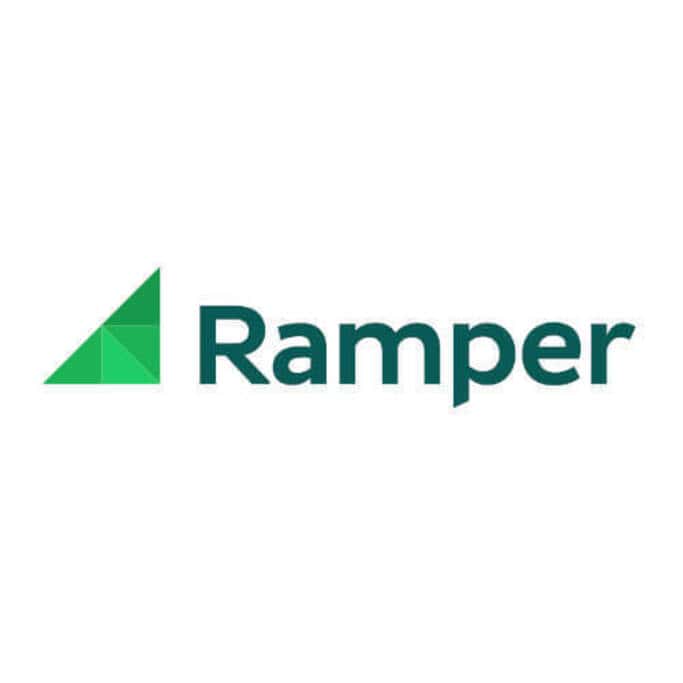
Protagnst is an official partner of Ramper. We got together when our brand Intern Brazil started to offer commercial consultancy.
Ramper is the best B2B business prospecting tool for generating qualified leads. It automates the entire prospecting process. This includes searching for contacts on LinkedIn, approaches and follow-up.
With this platform, it is possible to build lists and send emails in a segmented way, based on the definition of the Ideal Customer Profile for a given campaign. In addition, it is possible to monitor the metrics, which helps with conversion calculations and allows you to run more assertive campaigns.
Although it can be used to capture leads for all sizes of companies, Ramper has won over the market mainly for being a great ally for small and medium-sized companies looking to expand their business.
Let’s measure
Meetime
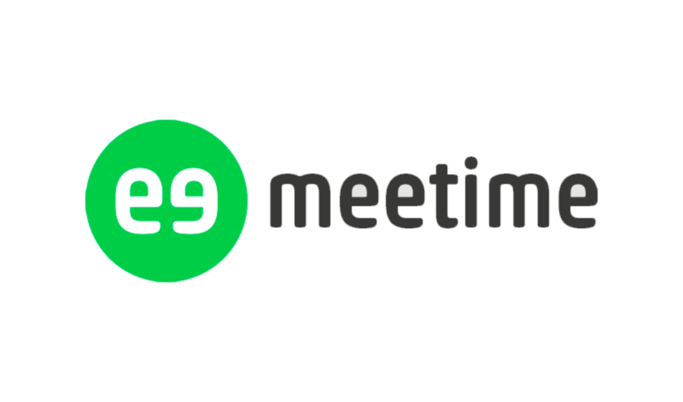
This is a multi-channel outbound prospecting tool. That is, through it, you can prospect through different channels such as email, telephone, whatsapp, linkedin and much more.
Apollo
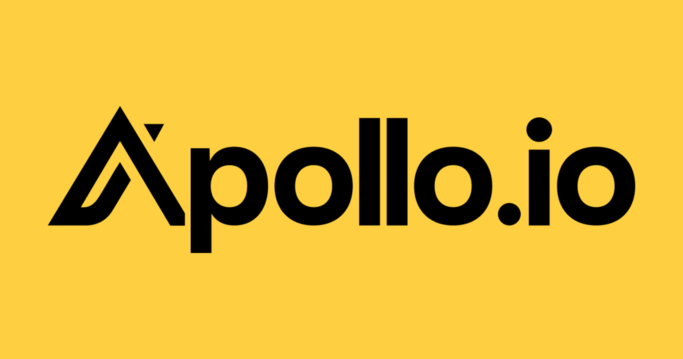
Apollo serves to create prospecting lists and also to automate the prospecting cadence flow by email, call and linkedin.
Find That Lead
As the name suggests, this tool aims to find the lead you intend to initiate contact with.
It integrates with LinkedIn – which makes things a lot easier – but it also works without using that function.
All you have to do is enter your full company name and your internet address. From there, Find That Lead is about finding you the correct email address for the person you’re looking for.
The tool has some interesting features, such as a complement to Google Sheets and an extension for the Chrome browser. In addition, it generates lists with large volumes of emails – and perhaps this is the great advantage for those looking for larger lists.
There is a free version, but it only allows you to use it for ten days. After that, you have to pay for a monthly subscription, whose values vary according to the amount of emails you want to get.
Find That Email
Remember the famous yellow pages of old telephone directories? They were the ones where advertisers put their contacts.
Because Find That Email is a platform that presents itself exactly that way, but as “the yellow pages of email”.
This tool’s main characteristic is the excellent delivery rate, greater than 90%. This means that out of every ten contacts you search for via
Find That Email, at least nine you will find.
Right off the bat, the platform has a database with more than 100 million emails already validated.
According to its developer, this tool integrates with more than 500 applications. And, if you install the plug-in for Google Chrome, you can search for contacts on social networks such as LinkedIn, Twitter and Facebook on your own.
The platform offers its use for free initially and promises subscriptions without a long-term contract – it is possible to cancel its use at any time.
Email Hunter
This is another tool for validating lead emails.
It operates integrated with LinkedIn and does its search by locating contacts of different people who connect.
In addition to validating emails, this tool allows you to create lists in Excel, organizing contacts and facilitating the launch of new prospecting campaigns.
In its free version, Email Hunter limits the user to up to 150 searches per month – even so, a considerable number depending on your ability to prospect.

Reev
Reev goes far beyond finding and validating leads. In addition to prospecting customers, this online tool personalizes and manages emails and allows you to track data and statistics.
The platform helps manage the customer base and automates the sales process, which reduces the time sellers spend sending emails.
With Reev, the advance of the potential client through the sales funnel is more easily followed, which allows for more precise interventions.
For all that it offers, this prospecting tool can be well used for both inbound and outbound marketing.
LinkedIn Sales Navigator
Linkedin Sales Navigator is focused on Social Selling, which is how we call the use of social networks to interact with customers and improve sales.
As it should be, this platform’s field of action is restricted to LinkedIn, but this in no way diminishes the attractions of this platform.
That’s because, as you know, it’s the main social network for work and business. Companies of all sizes have a LinkedIn page, as do most of the top professionals who work for them – including their leads.
In addition, the fact that it is a smaller network than others – such as Facebook, for example –, its database allows access to more qualified leads. Thus, prospecting promises to be more assertive than that of most competitors.
Sales Navigator is especially suitable for those looking for leads in large companies and focused on the technology sector.
Datanyze
The purpose of this prospecting tool is a little different, and very interesting.
It helps to capture the maximum amount of information of interest, such as billing and number of employees. Even the type of technology used on the company’s website is informed – and this is additional information for your company if it operates precisely in this field.
VoilaNorbert
This tool is not the best for those looking for mass contacts, but it is certainly one of the most interesting for those who work with a specific niche – whatever it may be.
That’s because your daily number of searches is quite limited. Thus, it becomes impracticable for large volumes of contacts, but perfect for more specific deals.
Another great attraction is the simple interface, which facilitates its operation.
Charlie App
This application collects information available online on the most diverse social networks, such as LinkedIn, Facebook and Twitter. It generates a report and sends it to the registration email.
Integrated with Gmail, it acts based on the next prospect meeting scheduled in Google Calendar. Thus, it allows you to have complete feedback on the most recent actions of the lead on social networks, which makes it possible to be more assertive in the approach.
There is, however, a catch: if the lead is not regular on social networks, the Charlie App becomes practically innocuous.
Geofusion
The proposal here is to prospect leads also based on geolocation.
Remember that an important part of prospecting for clients is to study and get to know them.
With Geofusion, it is possible to access a database by region and, from there, plan more specific actions. In addition, it allows you to research the performance of competitors using the same criteria, which makes it easier to come up with a more interesting proposal.
Outbound and inbound together
Now that you already know what outbound marketing is, its advantages, disadvantages and ways to do it using prospecting tools, it is worth making an observation: it does not need to be used in isolation. More than that, whenever you work using theinbound and outbound together, the gains increase.
One of the best ways to do this is to use inbound strategies to “warm up” outbound leads.We have already mentioned that one of the characteristics of outbound 2.0 lies in the fact that negotiations take longer and that they have a very consultative profile. More than offering a product or service, the first contacts serve to better understand the pain of that potential customer.
Imagine, then, the gain if the lead with whom you initiated an approach received prior emails with relevant information and that had to do with the solution you intend to present to him.
Beforehand, he would already have complementary content on how he could be helped – and that the connection that would follow would not have a purely commercial purpose, but would be a demonstration of being open to partnerships.

Final considerations
For a long time, marketing and sales relied almost exclusively on outbound strategies. Radio and TV campaigns, advertisements in newspapers and magazines and the famous telephone calls were the basis for prospecting new customers and seeking new business.
With the internet and new forms of communication, this model was losing ground to cheaper and long-term strategies. SEO techniques have made content marketing a darling. Prospecting went from active to passive and, instead of going in search of leads, it was the leads that started looking for companies.
However, the outbound sales model has never ceased to be important and, thanks to the contribution of Aaron Ross and his “predictable income”, it has proved to be the most interesting way to seek leads in B2B businesses. This is the most effective way to increase sales in a short period of time.
Even though they involve higher costs, outbound strategies have the great attraction of offering a quick return, whether in terms of conversion or campaign feedback. Investing in this model, which for some time was seen as out of tune, remains essential.
Hire outbound consulting
More than knowing what outbound mkt is for, how about structuring a process to increase your revenues? Protagnst specializes in B2B lead generation and customer acquisition for business to business. Fill out the form below so that we can put together the best strategy for your business through our outbound consultancy.
